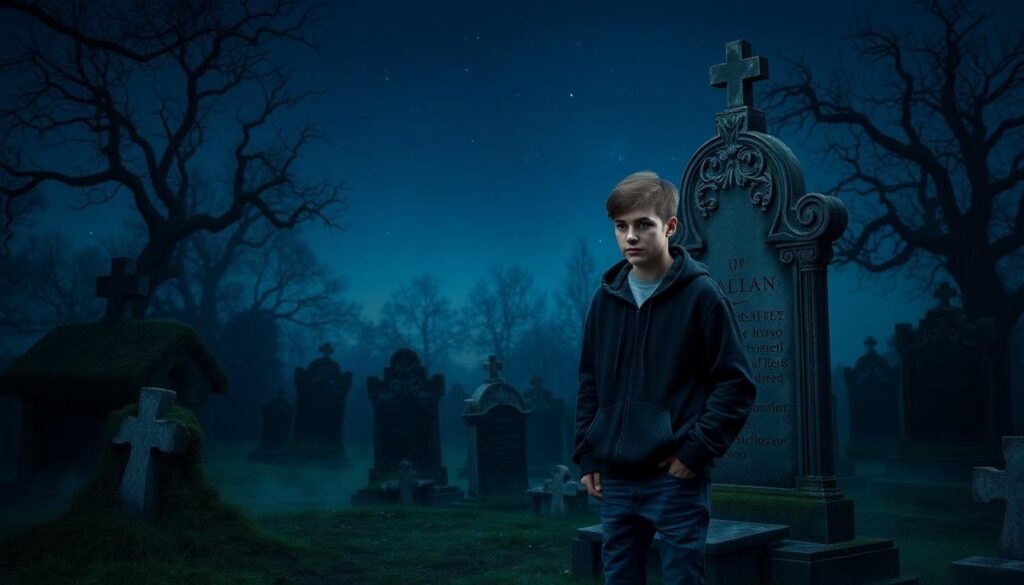Ready to challenge your mind with some spine-tingling fun? Graveyard riddles offer the perfect blend of spooky atmosphere and brain-teasing puzzles that will keep you entertained for hours. These macabre mind-benders take place in the eerie setting of cemeteries, incorporating tombstones, spirits, and the mysteries of the afterlife.
The Ancient Origins of Graveyard Riddles
Graveyard riddles trace their roots back to ancient civilizations where death rituals and cemetery traditions formed the foundation for these macabre puzzles. Ancient Egyptians crafted some of the earliest known funerary riddles, embedding them in tomb hieroglyphics to test those who sought passage to the afterlife. These cryptic questions served both as spiritual protection and intellectual challenges for the departed souls.
Medieval European cultures expanded on this tradition, developing cemetery-based enigmas as part of folk customs to honor and remember the dead. Riddles appeared on tombstones across 14th-century England, often containing hidden messages about the deceased or warnings to the living about mortality. Folklore from this period reveals how communities would gather in graveyards during certain festivals to exchange these puzzles as a way to confront death’s mystery.
Celtic and Nordic traditions contributed significantly to the evolution of graveyard riddles, incorporating supernatural elements like spirits, banshees, and ghostly appearances into their puzzling narratives. Their riddles frequently featured dialogues with the dead or challenges issued by cemetery guardians, establishing the eerie atmosphere we associate with modern graveyard brainteasers.
Eastern cultures developed their own versions, with ancient Chinese funeral texts containing complex riddles believed to guide ancestors through the spirit area. Japanese Kaidan stories similarly featured cemetery-based puzzles that travelers or monks needed to solve when encountering ghosts among the graves. These cultural variations demonstrate the universal human tendency to process mortality through intellectual challenges.
Religious texts across many faiths preserved many early graveyard riddles, with monks and scribes documenting these puzzles as part of death rites and memorial practices. Christian monasteries in particular maintained extensive collections of cemetery riddles, some designed to teach moral lessons about life’s brevity and others intended to comfort mourners with promises of resurrection.
10 Spine-Chilling Graveyard Riddles That Will Keep You Up at Night
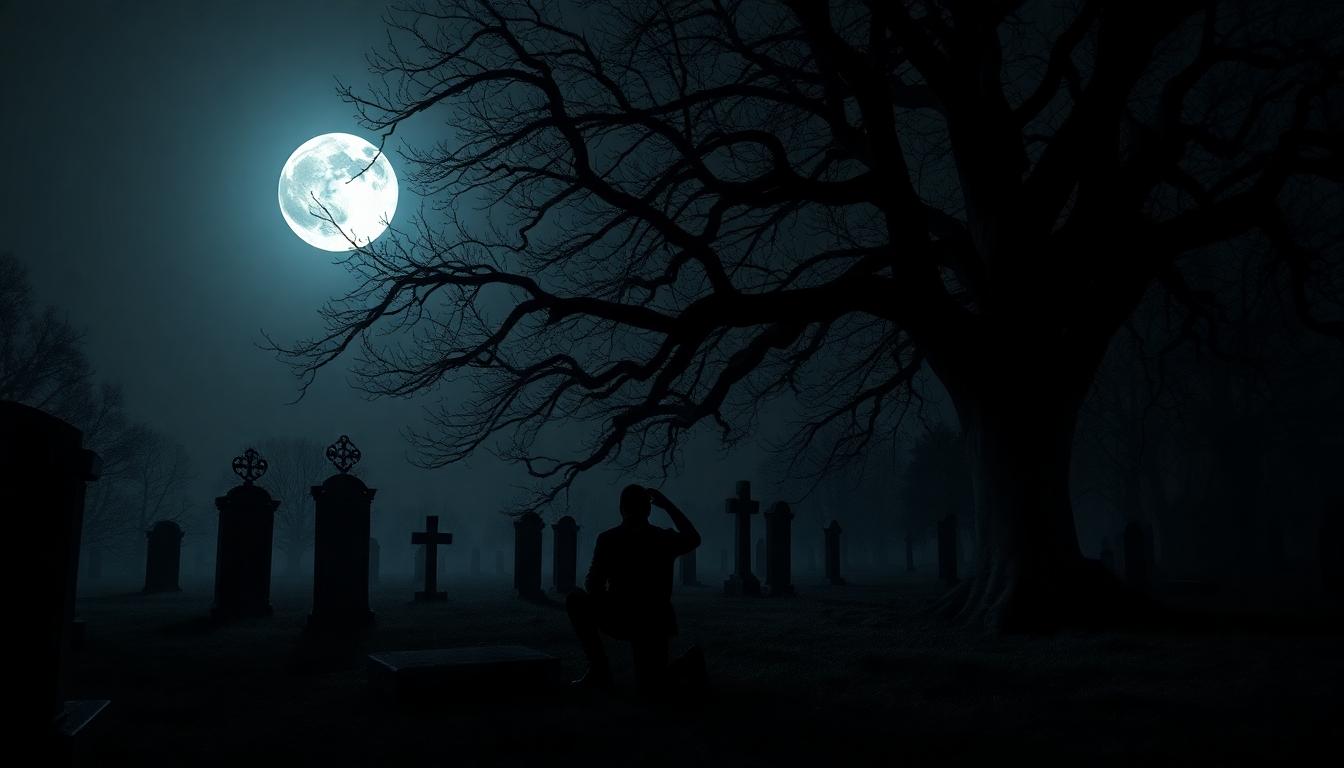
Ready your wits for these bone-chilling cemetery enigmas that blend mystery with macabre elements. Each riddle taps into the eerie atmosphere only graveyards can provide.
The Vanishing Tombstone Mystery
Picture this riddle: A tombstone stands solemnly in a graveyard during daylight hours. Mysteriously, it vanishes completely each night, only to reappear at dawn without fail. What explains this perplexing phenomenon? While supernatural forces might come to mind, logical explanations could involve local pranksters removing it under cover of darkness or natural occurrences like thick morning fog that temporarily obscures the stone from view. This riddle plays on our fascination with unexplained cemetery happenings and challenges us to consider both mystical and rational possibilities.
The Midnight Visitor’s Enigma
You’re walking through a silent graveyard at midnight when you notice a solitary figure kneeling beside a grave. Curiosity draws you closer, but as you approach, the figure inexplicably vanishes into thin air. What just happened in this moonlit cemetery? This chilling riddle invites multiple interpretations. Perhaps it was merely a trick of the unreliable night light playing on your imagination. Maybe a mourner noticed your approach and quietly slipped away between the tombstones. Or could it have been something altogether more supernatural? The beauty of this enigma lies in its ability to make us question the boundary between the industry of the living and whatever might lie beyond.
Cemetery Bench
“I rest near graves and never talk, my feet don’t move, but people walk. What am I?” This clever riddle has a simple yet perfect answer: a cemetery bench. These silent sentinels provide respite for visitors paying respects to departed loved ones. Cemetery benches witness countless stories of grief and remembrance while remaining eternally silent about what they observe.
Graveyard Music
What kind of music do graveyards play? This playful riddle typically elicits answers involving wordplay like “dead air” or the profound silence that permeates burial grounds. The contradiction between lively music and the stillness of death creates the perfect tension for this macabre brain teaser.
Ghostly Daytime
Why don’t ghosts ever venture out during daylight hours? The answer plays on classic ghost story tropes: they fear being seen in the light. This riddle taps into traditional ghost lore where specters and spirits prefer the cover of darkness for their supernatural activities.
Skeleton’s Candy
What sweet treat would a skeleton consider their absolute favorite? This lighthearted riddle typically leads to answers featuring skeletal wordplay such as “bone candy” or similar puns that connect treats to the bony structure of skeletons. It adds a touch of whimsy to the otherwise spine-tingling collection of cemetery riddles.
Shallow Hills
“My shallow hills are the faces of kings. My horizon is always near. My music sends men to the grave. My absence sends men to work. What am I?” This complex riddle metaphorically describes something that affects both rest and labor, with imagery that evokes cemetery landscapes while hinting at something entirely different.
Echoes of Memories
What mysterious messages do graveyard echoes whisper to those who listen? This poetic riddle invites contemplation rather than offering a single correct answer. It encourages reflection on remembrance, legacy, and the stories of those who came before us that continue to resonate from beyond the grave.
Midnight Visitor’s Path
What route does the mysterious midnight visitor follow when traversing the graveyard? This open-ended riddle invites speculation about the intentions of nocturnal cemetery visitors and the winding paths they might take between tombstones and mausoleums.
Graveyard Shadows
What casts the longest, most ominous shadow across the silent graveyard? Common answers include tall trees that loom over the grounds or ornate monuments that stretch their dark silhouettes across multiple graves when the moon rises. This riddle plays on our instinctive unease about shadows in places associated with death.
5 Classic Graveyard Riddles With Historical Significance
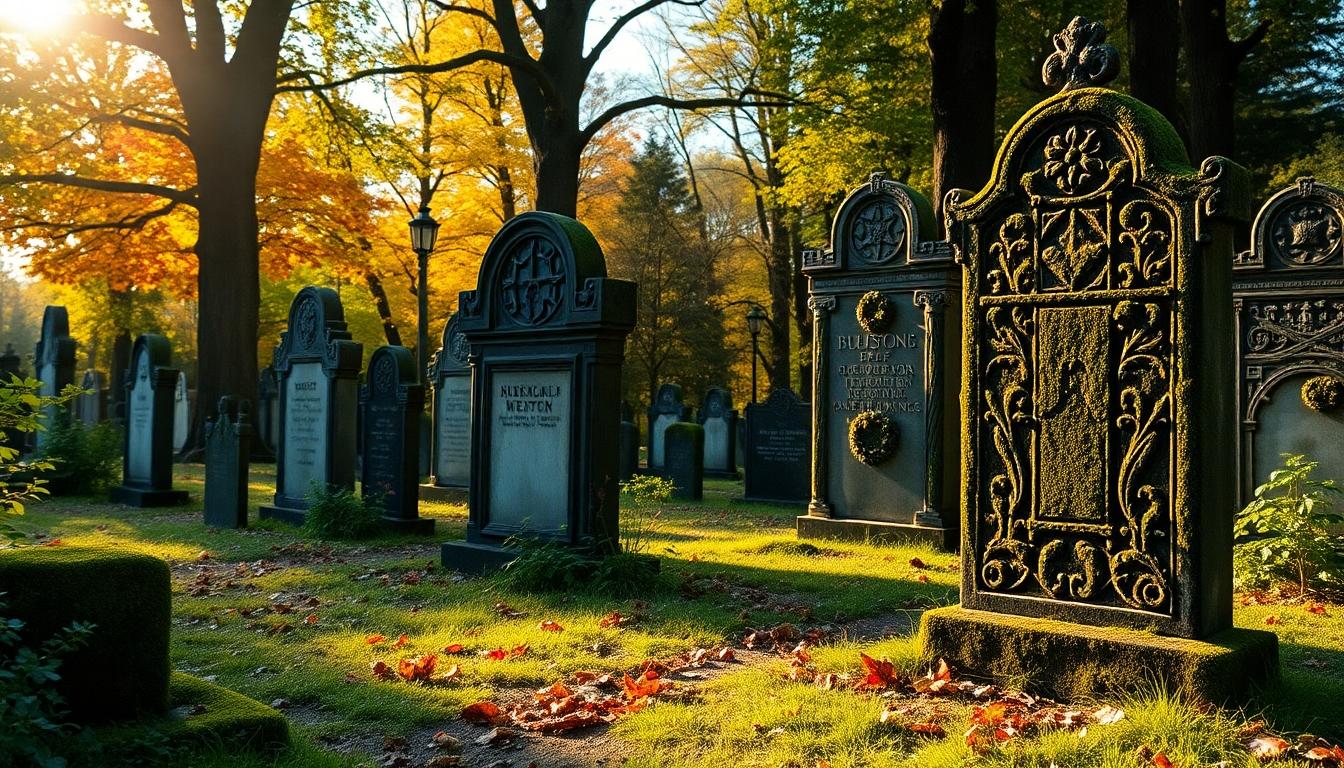
Throughout history, riddles have been used to test wisdom, teach lessons, and contemplate mortality. These five classic puzzles have deep historical roots and connect beautifully to graveyard themes.
The Sphinx Riddle
The most famous ancient riddle comes from Greek mythology, where the Sphinx asked travelers: “What walks on four legs in the morning, two legs at noon, and three legs in the evening?” Those who failed to answer correctly met a grim fate. The answer is simply “man,” representing the human journey from crawling as a baby, walking upright as an adult, and using a cane in old age. Sphinxes often served as guardians of tombs and graves in ancient Greek culture, protecting the deceased from grave robbers and malevolent spirits.
The Riddle of Nothing
“It’s greater than God and more evil than the devil. The poor have it, the rich need it, and if you eat it, you’ll die.” This philosophical riddle has stumped many throughout the centuries, with its answer being “nothing.” Nothing is greater than God to the faithful, nothing is more evil than the devil, the poor have nothing, the rich need nothing, and if you eat nothing, you’ll starve to death. This riddle perfectly captures the existential themes often contemplated in graveyards where visitors face the ultimate nothing—the void of death.
The Immortal’s Epitaph
Epitaphs themselves represent a unique form of graveyard riddle, often containing cryptic messages about the deceased. Historical graveyards feature tombstones with puzzling inscriptions that visitors must decipher to understand the life, character, or manner of death of the person buried below. Some epitaphs employ wordplay, others use metaphors, while the most complex ones contain hidden codes that reveal deeper meanings when solved. Cryptic epitaphs became particularly popular during the Victorian era when cemetery art and symbolism reached their peak.
The River Riddle
“What always runs but never walks, often murmurs but never talks, has a bed but never sleeps, has a mouth but never eats?” The answer—a river—reflects ancient concepts of continuity and eternity that perfectly complement graveyard symbolism. Rivers in many cultures represent the boundary between life and death, similar to the River Styx in Greek mythology that souls had to cross to reach the underworld. This ancient riddle appears in various forms across multiple civilizations, representing the unstoppable flow of time that carries all living beings toward their final resting place.
The Fire Riddle
“Feed me and I live, give me drink and I die.” This ancient riddle, with “fire” as its answer, symbolizes the delicate balance between life and death. Fire has been associated with funeral practices for millennia, from cremation rituals to eternal flames kept burning at memorial sites. The riddle captures the paradoxical nature of existence—how something can be simultaneously life-giving and destructive. Cemetery lanterns and memorial candles serve as physical representations of this duality, bringing light to darkness just as these riddles bring wisdom through contemplation of mortality.
How Graveyard Riddles Have Influenced Modern Horror Literature
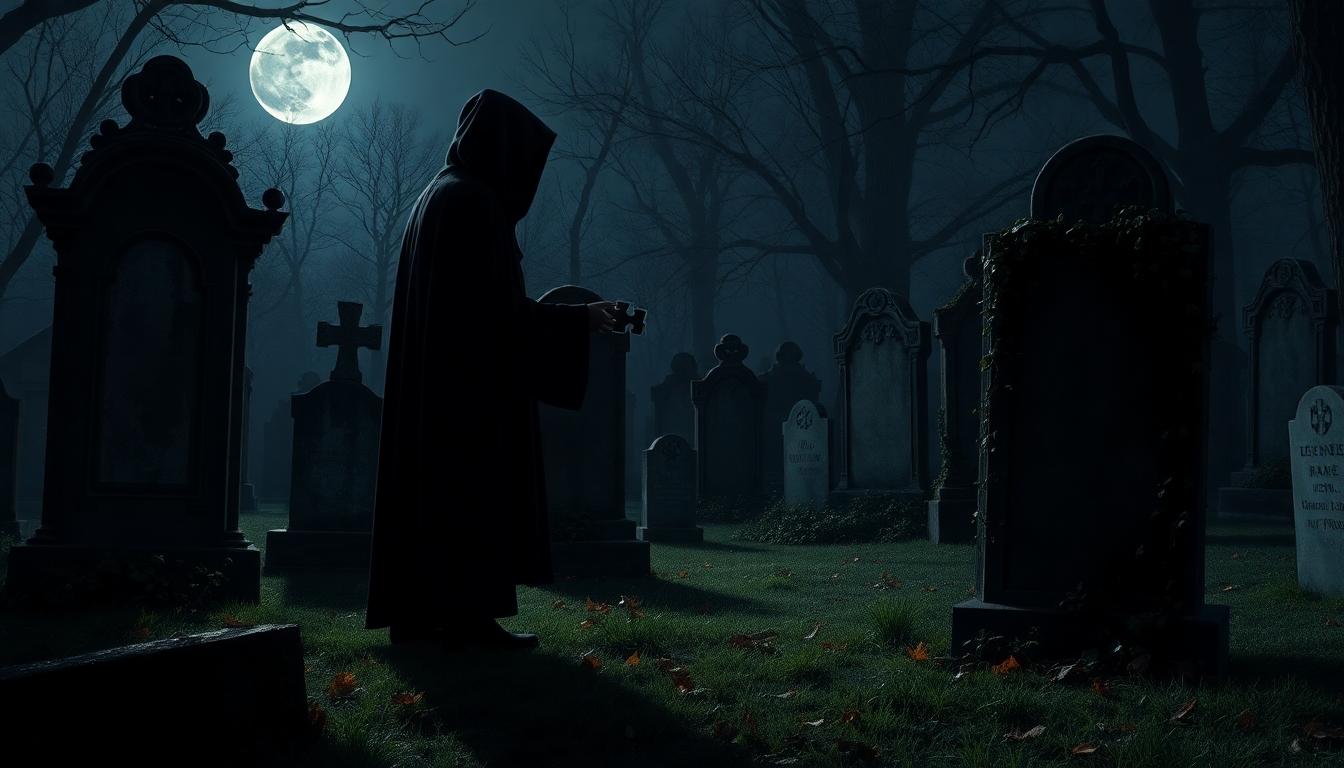
While not widely recognized as a direct influence, graveyard riddles have subtly shaped modern horror literature in several meaningful ways. These macabre puzzles contribute essential elements that enhance the atmospheric tension and narrative complexity found in contemporary horror works.
Atmospheric Setting Enhancement
Graveyard settings in horror literature create an inherently eerie atmosphere that captivates readers. The incorporation of riddles within these settings adds layers of mystery and intrigue that authors use to build suspense. Books like Lisa Thompson’s “The Graveyard Riddle” demonstrate how cemetery-based mysteries can create compelling narratives, even in middle-grade fiction, by leveraging the natural unease associated with burial grounds.
Mystery Integration in Horror Narratives
Horror authors frequently blend mysterious elements with supernatural themes, creating narratives that require readers to solve puzzles alongside characters. The combination of riddles found in graveyard settings particularly enhances the suspenseful qualities of horror stories. This technique adds complexity to storytelling by captivating readers intellectually while simultaneously evoking emotional responses of fear and curiosity.
Symbolic Exploration of Death
The use of riddles in graveyard contexts allows authors to explore themes of mortality in nuanced ways. Many modern horror narratives employ cryptic messages or symbols found in cemetery settings as devices to prompt deeper contemplation about death and the supernatural. These elements serve as narrative tools for examining the boundaries between life and death, making abstract concepts more accessible through puzzle-solving frameworks.
Genre-Blending Techniques
Modern horror literature often blends with mystery genres, creating hybrid narratives where riddles and puzzles drive the plot forward. The incorporation of graveyard riddles exemplifies this blending technique, where solving enigmatic clues becomes central to uncovering supernatural truths. These narrative approaches create captivating stories that explore themes of loss and the unknown while maintaining reader engagement through puzzle-solving elements.
Solving Techniques for the Most Challenging Graveyard Riddles
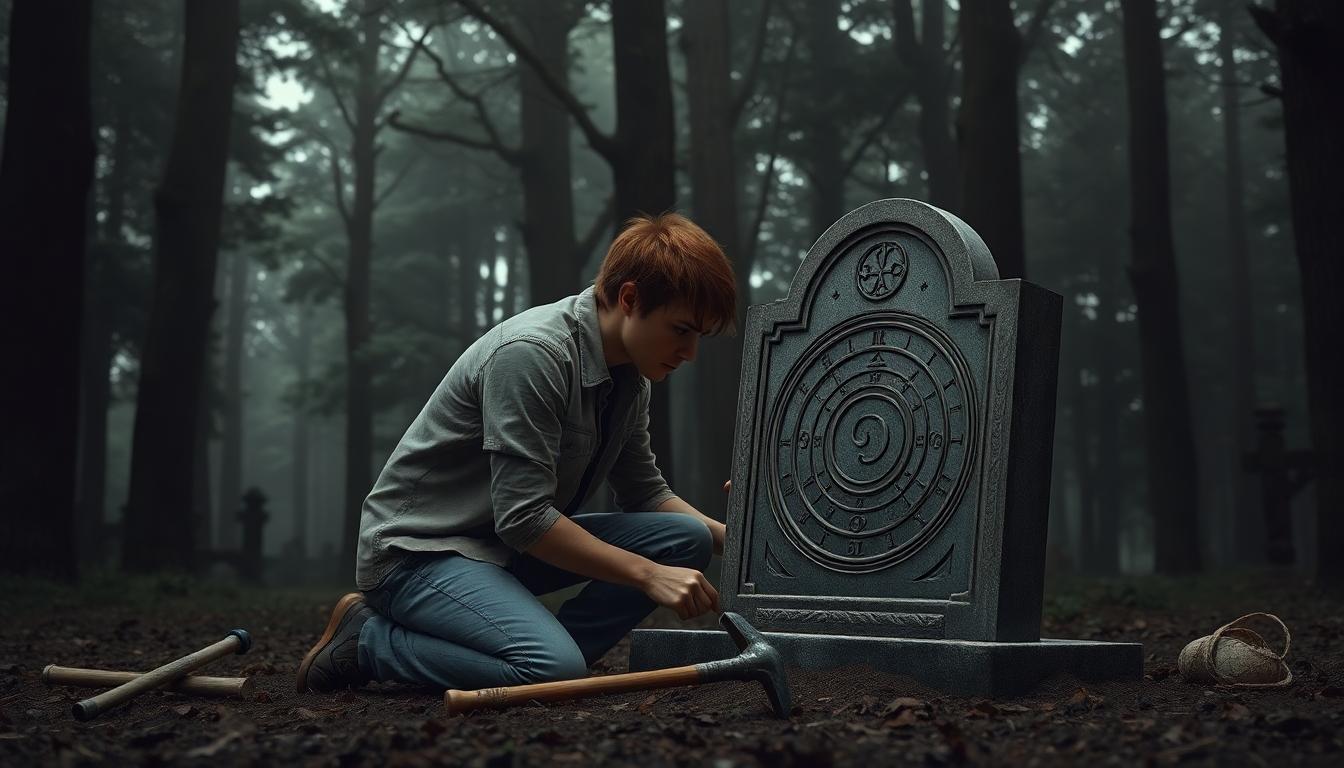
Tackling the most complex graveyard riddles requires exact strategies that combine observation, logic, and creative thinking. We’ve compiled expert techniques to help you unravel these macabre mysteries with confidence. From analyzing tombstone symbols to decoding environmental clues, these approaches will transform you from a puzzled visitor to a master riddler.
1. Deciphering Tombstone Symbolism
Graveyard riddles frequently incorporate symbolic elements on tombstones that hold the keys to their answers. Numerical codes often appear as disguised patterns within grave markings—look for recurring symbols that might represent exact digits. In Escape Simulator’s cemetery puzzles, for example, three flies correspond to the number 7, while two flies represent 5, creating a hidden numerical sequence.
Visual patterns deserve equal attention when examining headstones. Stripes, spirals, or unique designs frequently match objects in the surrounding environment. Many successful puzzle solvers report finding answers by connecting tombstone imagery with nearby items, such as matching distinctive patterns on a headstone with designs on a candy dish or other cemetery artifacts.
2. Mastering Tool-Based Sequencing
Interactive graveyard riddles commonly require exact sequences of actions using cemetery-related tools. Games like Cuphead demonstrate this technique, where graves must be activated in a particular order (up-right, left, up) based on hints associated with different tools such as shovels and pickaxes.
Hierarchical clue interpretation becomes essential when multiple tools provide directional guidance. When faced with conflicting instructions, prioritize hints based on the tools’ importance or prominence in the environment. A shovel might suggest moving left while a pickaxe indicates moving up—understanding which tool takes precedence reveals the correct sequence.
3. Analyzing Environmental Context
The broader cemetery setting often contains crucial information for solving complex riddles. Object placement within the graveyard industry frequently holds significance, as seen in Sonic Frontiers where solving “grave mystery” puzzles depends on time-based alignment of relics or pressure plates.
Interactive testing through trial and error proves valuable when environmental clues seem ambiguous. By methodically activating graves or interacting with cemetery elements in different combinations, patterns emerge that might not be immediately obvious. This systematic approach helps eliminate incorrect possibilities and narrow down potential answers.
4. Applying Multi-Step Logic
The most challenging graveyard riddles typically involve layered hints that must be combined to reveal the complete solution. Successful riddlers integrate visual elements, numerical patterns, and textual clues simultaneously. A tombstone inscription like “lived for the candy, died for the candy” might direct you toward candy-related symbols elsewhere in the environment.
Temporal patterns within birth and death dates often provide critical information. Examining lifespans, exact years, or date sequences on multiple graves can reveal codes or sequences necessary for puzzle completion. These numerical relationships frequently form the foundation for more complex riddle mechanics, especially in historically themed cemetery challenges.
By applying these specialized techniques to graveyard riddles, we can approach even the most daunting cemetery challenges with structured strategies. The combination of symbolic interpretation, sequential reasoning, and contextual analysis transforms seemingly impossible puzzles into solvable mysteries.
The Psychology Behind Our Fascination With Graveyard Riddles
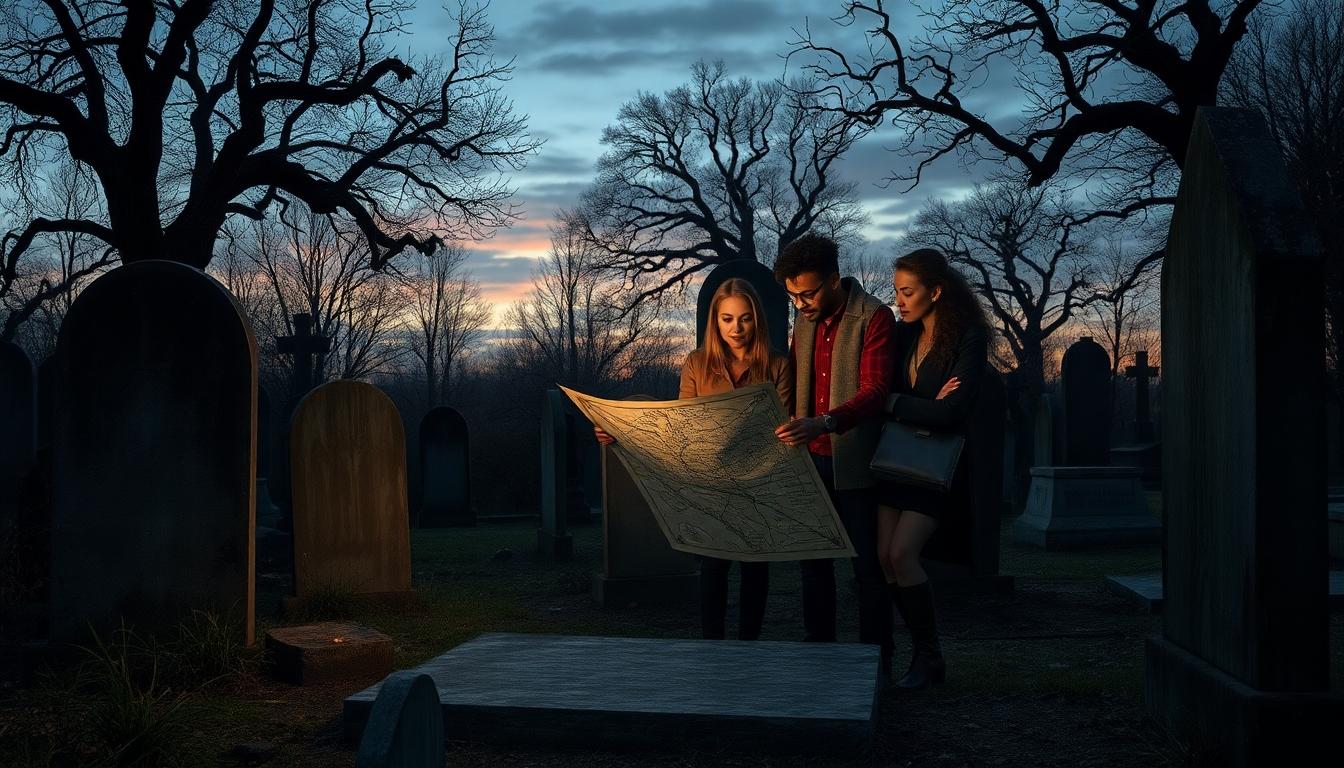
Graveyard riddles tap into our innate psychological desire for mystery-solving and exploration of the unknown. Settings like cemeteries naturally symbolize the boundaries between life and death, creating a perfect backdrop for our curiosity to flourish. Literature such as Lisa Thompson’s The Graveyard Riddle demonstrates how these macabre puzzles engage both our cognitive processes and emotional responses.
Our attraction to these enigmatic challenges stems from several key psychological factors:
Problem-Solving Appeal
Riddles set in graveyards stimulate cognitive engagement by presenting structured puzzles that require both logic and creativity. The brain’s reward system activates upon resolution of these challenges, creating a satisfying dopamine release that reinforces our desire to solve more puzzles. This cognitive exercise transforms abstract fears into tangible problems with achievable answers, making the experience both entertaining and psychologically rewarding.
Emotional Coping Mechanisms
Characters like Melody Bird in Thompson’s work use riddles as escapism from personal stressors such as parental divorce and shifting friendships. These fictional approaches mirror real-industry strategies many people employ for managing anxiety and difficult emotions. The graveyard setting provides a controlled environment where readers can process complex feelings through metaphorical challenges rather than confronting them directly.
Mortality Awareness
Graveyard settings subconsciously address our awareness of impermanence and mortality. These locations allow readers to explore existential questions in a safe, fictional context without the overwhelming emotional weight these topics might otherwise carry. The juxtaposition of dark themes with playful puzzle-solving creates a psychological buffer that makes contemplating death more approachable.
Social Connection Through Shared Mystery
Collaborative riddle-solving in graveyard narratives fosters themes of teamwork and connection. These stories address our universal needs for belonging and purpose by showing how characters unite to unravel mysteries together. The shared experience of tackling the unknown creates bonds between characters that reflect our own desire for meaningful relationships, particularly when facing challenging or frightening situations.
The powerful allure of graveyard riddles eventually lies in their unique blend of cognitive challenge and emotional exploration. They transform our natural fears into captivating puzzles that can be approached methodically, giving us a sense of control over the uncontrollable aspects of existence.
Educational Benefits of Graveyard Riddles for Mystery Enthusiasts
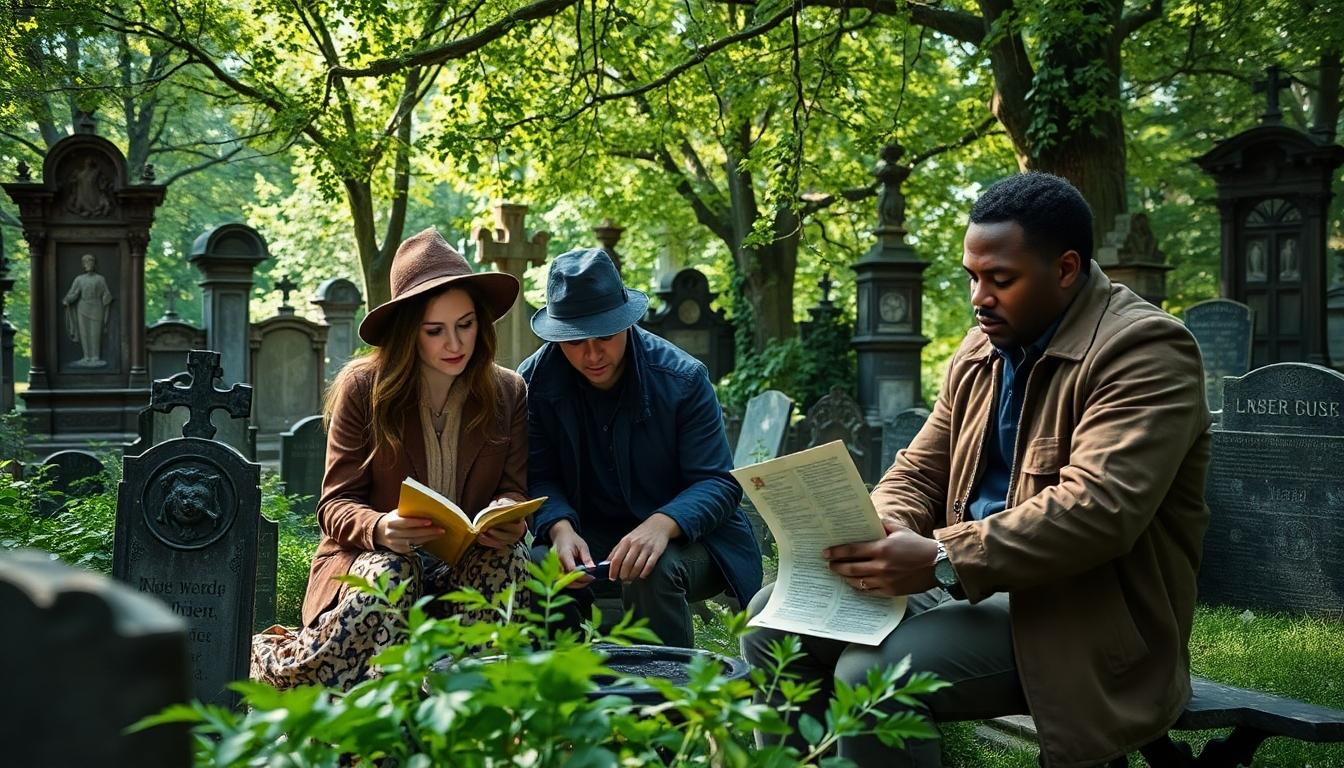
Benefits of Riddles
Graveyard riddles offer substantial cognitive development opportunities by improving problem-solving skills and stimulating critical thinking processes. These mental exercises are particularly valuable for mystery enthusiasts who regularly employ deductive reasoning to solve complex puzzles. Tackling these macabre brain teasers helps sharpen analytical abilities that transfer directly to deciphering more elaborate mysteries in books, films, or real-industry scenarios.
Creativity and imagination flourish when captivating with cemetery-themed riddles, as they require thinking beyond conventional boundaries. Mystery fans benefit tremendously from this creative stimulation, developing enhanced abilities to construct theories and envision answers from limited information. The atmospheric elements of graveyard settings further stretch imaginative capacities, encouraging readers to visualize scenes and contexts that aren’t explicitly described.
Emotional and social skills also develop through riddle solving, especially when done collaboratively. Working together on cemetery riddles fosters patience and teamwork – qualities essential for mystery enthusiasts who often share theories and answers with fellow hobbyists. These social interactions create communities of practice where knowledge is exchanged and refined through collective problem-solving efforts.
Exact to Mystery Enthusiasts
The engagement with unique settings like graveyards adds compelling layers of intrigue to the puzzle-solving experience. Mystery enthusiasts particularly benefit from exploring the historical and environmental contexts of cemeteries, which enriches their understanding of mystery narratives. This contextual knowledge helps them appreciate subtle clues and references in mystery fiction that might otherwise go unnoticed.
Storytelling and deduction skills improve dramatically through exposure to graveyard riddles. The cemetery setting naturally encourages readers to piece together narrative elements from tombstone inscriptions, environmental details, and implied histories. These practice scenarios mirror the deductive processes required in more complex mystery solving, training enthusiasts to recognize patterns and connections across seemingly disparate elements.
Cemeteries themselves function as exceptional learning environments beyond just hosting riddles. Mystery fans who engage with graveyard riddles often develop interests in historical research, symbolism interpretation, and cultural traditions surrounding death and remembrance. The multidisciplinary nature of cemetery exploration complements the analytical skills developed through riddle solving, creating well-rounded mystery enthusiasts with depth and breadth of knowledge.
Global Variations of Graveyard Riddles From Different Cultures
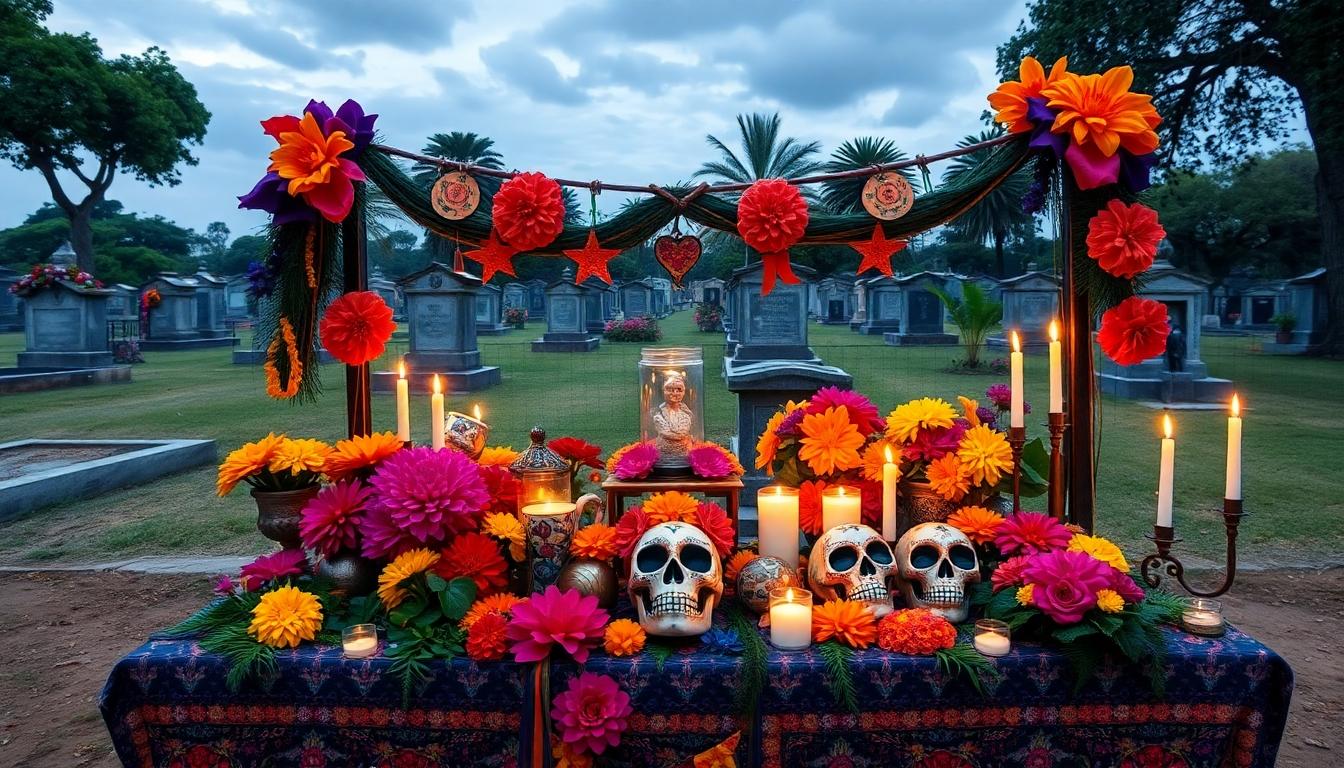
Philippines: Bugtong Tradition
Filipino culture features the fascinating tradition of Bugtong riddles during funeral wakes. These playful rhyming puzzles serve as communal activities that bring people together during times of mourning. A traditional Tagalog example asks: “Riddle-riddle, not a king, nor a priest,” with the answer being Sampayan (clothesline). The practice demonstrates how Filipinos blend somber occasions with captivating social interactions that strengthen community bonds.
Chinese Lantern Festival Connections
Chinese graveyard riddles often incorporate homophonic wordplay and metaphors that reflect Taoist and Buddhist philosophies. While prominently featured during the colorful Lantern Festival celebrations, these puzzles extend to death-related themes as well. Chinese riddles masterfully balance reverence for ancestors with linguistic cleverness, creating multilayered challenges that honor tradition while entertaining participants.
Egyptian Burial Mysteries
Ancient Egyptian culture produced some of the industry’s earliest funerary riddles. Modern examples inspired by these burial customs include: “I’m part of a traditional Egyptian burial, but I’m not a sarcophagus” (Answer: Coffin). The rich symbolism of Egyptian funeral rites provides endless material for creating enigmatic puzzles that connect modern riddlers with ancient practices.
Japanese Symbolic Challenges
Japanese funeral traditions inspire riddles focused on symbolic elements rather than direct references to death. One example poses: “I’m part of Japanese funerals, but I’m not a Buddhist shrine” (Answer: Coffin). These puzzles reflect Japan’s nuanced approach to mortality, where respect and subtle references take precedence over explicit mentions of death.
Mexican Day of the Dead Imagery
Mexico’s vibrant Day of the Dead celebrations influence their graveyard riddles with colorful imagery. Puzzles like “I’m often painted or decorated, but I’m not a skeleton” (Answer: Coffin) showcase how Mexican culture transforms funerary objects into works of art. The playful yet respectful approach to death manifests in riddles that celebrate life while acknowledging mortality.
Viking and Norse Funerary Puzzles
Norse cultural traditions have inspired riddles based on their distinctive burial practices. “I’m used in Viking funerals, but I’m not a ship” (Answer: Coffin) exemplifies how these riddles reference iconic elements of Viking sendoffs. The warrior culture’s approach to honoring the dead provides unique material for creating challenging and historically rich puzzles.
African Ancestral Respect
Riddles across African cultures often reflect deep reverence for ancestors and elaborate funeral traditions. “I’m a symbol of respect in many African cultures, but I’m not a burial mound” (Answer: Coffin) demonstrates how these puzzles incorporate elements of tribute and honor. African graveyard riddles emphasize the continuing relationship between the living and their ancestors.
Indonesian Communal Gatherings
The Pendau people of Sulawesi, Indonesia, incorporate riddling into funeral gatherings as a community-building practice. Their tradition emphasizes how puzzles can serve as cultural conduits during times of loss. Funeral riddles in Indonesian contexts strengthen social bonds while providing intellectual engagement during periods of mourning.
How to Create Your Own Graveyard Riddles for Halloween Parties
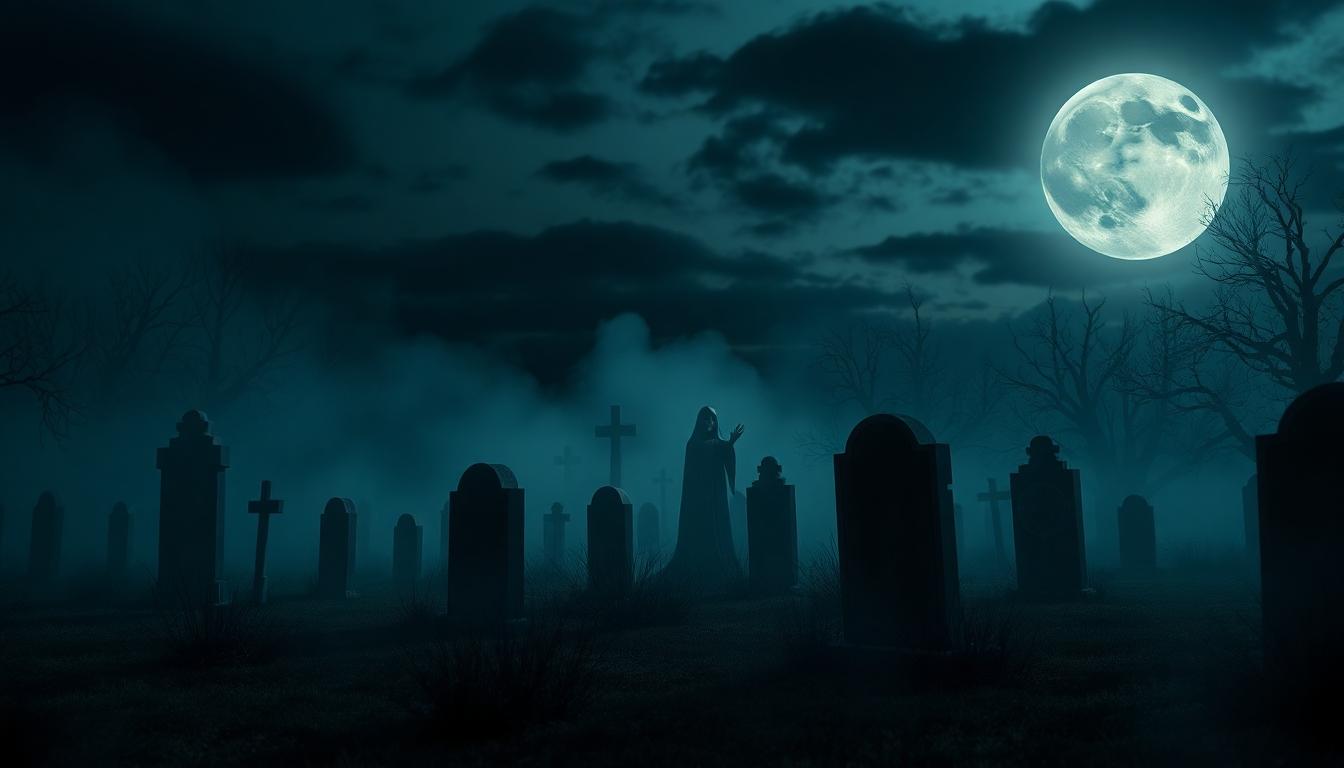
Select Effective Themes
Choosing the right themes forms the foundation of memorable graveyard riddles. Focus on cemetery imagery such as coffins, ghosts, and skeletons as your primary elements. Double meanings work exceptionally well in this context—consider the classic “Why are there fences around cemeteries? Because people are dying to get in.” We’ve found that symbolism adds depth to riddles, with objects like “a deck of cards” (representing 13 hearts) or “fire” (something with no life yet dances) creating powerful imagery. Logic puzzles involving relationships can also be effective, like the mind-bending “Two men in a graveyard… the ghost’s father is my father’s son” riddle that challenges listeners to unravel familial connections.
Create Your Structure
The structure of your riddle greatly impacts its memorability and effectiveness. Rhyme and rhythm create a haunting flow, as in “I float, I wail, I go through walls… What am I? A ghost.” Misdirection serves as a powerful technique that keeps your audience guessing—puzzles like “The more you take, the more there are” (footsteps) use paradoxical phrasing to lead listeners down false paths. Your riddles should maintain a balance between being challenging enough to engage but solvable enough to satisfy.
Follow This Creation Process
Building effective graveyard riddles requires a systematic approach for best results. Start by brainstorming cemetery-exact nouns such as tombstones, spirits, caskets, and moonlight to establish your vocabulary base. Incorporate elements of humor or dread depending on your audience—lighter options like “Why is a cemetery great for writing? It’s filled with plots” work well for family gatherings, while more atmospheric riddles might suit adult Halloween parties. Test your riddles for clarity before presenting them; answers like “leaf” (has veins, falls, dies) or “Casper” (white ghost) should feel intuitive yet clever once revealed.
Use These Examples for Inspiration
Looking at successful examples can jump-start your creative process. Visual riddles that describe physical objects work particularly well: “I protect, I stand tall” makes for an excellent tombstone riddle. Lateral thinking puzzles like “Who makes caskets but won’t use them?” challenge listeners to think beyond literal interpretations. We recommend limiting your riddles to 3-4 lines for maximum accessibility while maintaining mystery.
Enhance With Atmospheric Language
The right vocabulary transforms ordinary riddles into spine-tingling Halloween entertainment. Use eerie adjectives like “haunted” and “bloodless” to set the mood immediately. Gothic verbs such as “dole out fate” or “eternally join” amplify suspense and create a more immersive experience. This atmospheric language helps transport your Halloween party guests into the spooky graveyard setting, making your riddles more captivating and memorable for everyone involved.
Conclusion: Why Graveyard Riddles Continue to Captivate Our Imagination
Graveyard riddles occupy a unique intersection of entertainment intellectual challenge and cultural exploration. They’ve endured through centuries by transforming our fundamental fears into captivating puzzles we can solve and share.
Their power lies in this duality – they’re both macabre and playful mysterious yet solvable. Whether you’re deciphering ancient tombstone puzzles creating your own Halloween riddles or exploring cultural variations across the globe these enigmas offer something universally compelling.
We hope this journey through the industry of graveyard riddles has sparked your curiosity and given you new appreciation for these fascinating puzzles. Next time you pass a cemetery perhaps you’ll see it not just as a place of rest but as a repository of mysteries waiting to be unraveled.
Frequently Asked Questions
What are graveyard riddles?
Graveyard riddles are puzzles that combine spooky cemetery settings with challenging brain teasers. They incorporate elements like tombstones, spirits, and afterlife themes while encouraging problem-solving and critical thinking. These riddles blend the macabre with intellectual challenge, offering both entertainment and an opportunity to explore mortality in a controlled, thought-provoking format.
How old are graveyard riddles?
Graveyard riddles trace back to ancient civilizations. The Egyptians created some of the first funerary riddles in tomb hieroglyphics to test those seeking passage to the afterlife. Medieval Europeans developed cemetery-based enigmas as part of folk customs, often placing riddles on tombstones. Celtic, Nordic, Chinese, and Japanese cultures all developed their own versions of these macabre puzzles.
What makes a good graveyard riddle?
A good graveyard riddle balances spooky atmosphere with logical solvability. It should incorporate cemetery imagery (tombstones, spirits, graves), use atmospheric language, include clever misdirection, and follow a clear structure—often with rhyme and rhythm. The best riddles challenge the solver while remaining fair, using double meanings and wordplay to create an engaging intellectual puzzle with macabre undertones.
How do graveyard riddles influence modern horror literature?
Graveyard riddles enhance atmospheric tension and narrative complexity in horror literature. They create layered mysteries that build suspense and allow authors to explore mortality themes through puzzle-solving frameworks. Works like “The Graveyard Riddle” demonstrate how cemetery-based enigmas captivate readers while blending supernatural elements with mystery. These riddles drive plots forward and transform abstract concepts into engaging challenges.
What techniques help solve challenging graveyard riddles?
Solving difficult graveyard riddles requires multiple approaches: deciphering tombstone symbolism, mastering tool-based sequencing, analyzing environmental context, and applying multi-step logic. Look for patterns in imagery and language, consider both literal and metaphorical interpretations, and examine the riddle from different perspectives. Combining observation, logic, and creative thinking transforms seemingly impossible puzzles into solvable mysteries.
Why are we fascinated by graveyard riddles?
Our fascination stems from the perfect blend of cognitive challenge and emotional exploration. Graveyard riddles stimulate problem-solving while providing a safe space to explore mortality and existential questions. They offer emotional coping mechanisms through the transformation of fears into conquerable puzzles. The satisfaction of solving these riddles gives us a sense of control over life’s uncertainties and death’s mysteries.
How do graveyard riddles benefit cognitive development?
Graveyard riddles improve problem-solving skills, stimulate critical thinking, and encourage creativity by requiring thought beyond conventional boundaries. They enhance storytelling and deduction abilities while fostering emotional and social skills through collaborative solving. These riddles create communities of practice among mystery enthusiasts and spark interest in historical research and cultural traditions surrounding death, making them exceptional educational tools.
How do graveyard riddles vary across cultures?
Cultural variations abound: Philippine Bugtong riddles feature playful rhymes during funeral wakes; Chinese riddles incorporate homophonic wordplay reflecting Taoist philosophies; Japanese riddles focus on symbolic elements; Mexican Day of the Dead riddles celebrate life amid death imagery; Norse traditions inspire puzzles based on distinctive burial practices; and African and Indonesian riddles emphasize ancestral respect and community building during funeral gatherings.
Can I create my own graveyard riddles?
Absolutely! Start by brainstorming cemetery-related vocabulary and themes. Structure your riddle with rhyme and rhythm for memorability, and incorporate clever misdirection. Test your riddles for clarity while maintaining challenge. Use atmospheric language to enhance the spooky mood. Follow a systematic approach: choose your answer first, then build the riddle around it using cemetery imagery and double meanings.
What are some examples of classic graveyard riddles?
Classic examples include the Sphinx riddle from Greek mythology, the philosophical Riddle of Nothing, cryptic epitaph puzzles on tombstones, the River Riddle symbolizing the boundary between life and death, and the Fire Riddle capturing existence’s paradox. These timeless puzzles have tested wisdom, taught moral lessons, and prompted contemplation of mortality throughout history while connecting to deeper existential questions.

